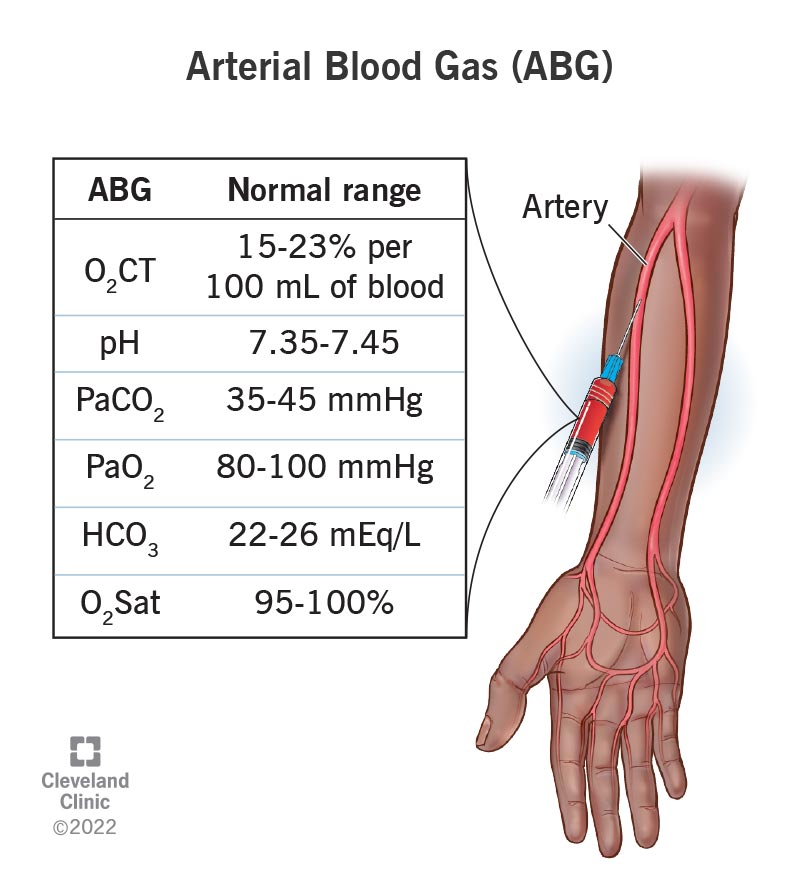blood gas
Blood gas analysis, specifically the arterial blood gas (ABG) test, is a critical diagnostic tool used to assess the levels of oxygen and carbon dioxide in the blood, as well as the blood's pH balance. This test is commonly performed to evaluate lung function and the overall acid-base status of the body.
-
General Overview of ABG: The ABG test measures various parameters, including how much oxygen and carbon dioxide are present in the blood, and it checks for acidity or alkalinity. It is a vital assessment performed in clinical settings for managing respiratory and metabolic conditions. For a detailed understanding, you can refer to the Cleveland Clinic's overview here.
-
Diagnostic Tool: Blood gas analysis is extensively utilized in medical practice to evaluate the partial pressures of gases in the blood along with acid-base content. More information can be found in the NCBI Bookshelf here.
-
Procedure and Purpose: The ABG test not only measures oxygen and carbon dioxide levels but also assesses the acidity of the blood, which can indicate various health conditions related to respiratory and metabolic functions. You can find additional details on MedlinePlus here.
-
Interpreting Results: Understanding the results of an ABG test can be complex; a systematic six-step interpretation process helps clinicians accurately analyze the data. Resources on this interpretation can be accessed through the American Thoracic Society here.
-
ABG Analyzer: To aid in analysis, there are tools available, such as the ABG Analyzer by MDCalc, which provides a platform to interpret ABG findings and values effectively. More information is available here.
-
Functionality of Lungs: The ABG analysis also serves to evaluate how effectively the lungs are functioning, determining the balance of oxygen and carbon dioxide. For more insights on this aspect, check out the University of Rochester's resource here.
-
Comprehensive Information: Lastly, Mount Sinai provides extensive information on blood gas measurements, focusing on how they reflect the oxygen and carbon dioxide levels in the blood alongside acidity levels. Their informative article can be accessed here.
In summary, blood gas analysis, particularly through an ABG test, is essential for evaluating lung function and acid-base balance, offering vital insights into a patient's respiratory and metabolic health. Understanding its parameters and interpretation is crucial for accurate diagnosis and treatment planning.
Sources


Related Questions
Work fast from anywhere
Stay up to date and move work forward with BrutusAI on macOS/iOS/web & android. Download the app today.
